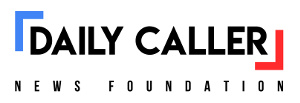by Will Kessler
Many companies are looking to cut down on their debts as recent high inflation reports have made borrowing more expensive as the prospect of interest rate cuts by central banks diminishes, The Wall Street Journal reported Wednesday.
 Even companies with already high credit outlooks are deleveraging to boost their rating with top agencies and reduce debt costs that have increased along with interest rates, while firms with lower ratings are needing to cut debt to maintain profitable operations, according to the WSJ. Investors have had to adjust their view about when interest rates might decline in recent weeks as persistently high levels of inflation have made it less likely that central banks around the world, including in the U.S., will cut interest rates, reducing the cost of holding debt.
Even companies with already high credit outlooks are deleveraging to boost their rating with top agencies and reduce debt costs that have increased along with interest rates, while firms with lower ratings are needing to cut debt to maintain profitable operations, according to the WSJ. Investors have had to adjust their view about when interest rates might decline in recent weeks as persistently high levels of inflation have made it less likely that central banks around the world, including in the U.S., will cut interest rates, reducing the cost of holding debt.
“High yield companies are deleveraging, possibly even more than investment grade companies at the moment. But that is out of necessity,” Viktor Hjort, global head of credit strategy at BNP Paribas, told Dow Jones Newswires, according to the WSJ. “Not everyone can make it, but we think that the deleveraging trend over time will probably be a fairly broad-based process.”
Investors have increasingly pushed back projections of a potential cut to the federal funds rate by the Federal Reserve, with a majority not predicting lower rates until the Fed’s November meeting later this year, according to CME Group’s FedWatch Tool. Before the Fed’s January meeting, investors were projecting that rates would be cut by 0.25 percent from their current range of 5.25 percent and 5.50 percent in March.
Inflation in the U.S. has failed to decelerate below 3 percent year-over-year in recent months, measuring 3.5 percent in March and 3.2 percent in February.
Highest odds yet for no rate cuts in 2024
@CMEGroup @biancoresearch pic.twitter.com/woClgoVZgf— Liz Ann Sonders (@LizAnnSonders) April 30, 2024
One company reducing debt is American gold-mining firm Newmont, which is working toward deleveraging down to a $5 billion net debt target, according to the WSJ. The real estate sector is also likely to be considerably affected by leaving rates higher for longer due to being heavily indebted in both the U.S. and Europe.
The number of U.S. office buildings that are facing default, foreclosures or another form of financial distress is currently at its highest point since the fourth quarter of 2012, collectively worth $38 billion. Commercial real estate as a whole is facing a huge mountain of debt that is set to come due in the next few years, posing huge risks for small- and medium-sized banks that hold an outsized portion of commercial mortgage-backed securities.
With the timeline for potential rate cuts being pushed back, some highly indebted companies that have been delaying issuing new debt to avoid high rates will be forced to refinance debt that is reaching term soon, possibly increasing the supply on the market, according to the WSJ. Companies with high debts and low credit ratings might be in the most trouble, as high interest rates lead to speculation that current underperformance, as seen in the current market, will continue.
– – –
Will Kessler is a reporter at Daily Caller News Foundation.
Photo “Business Meeting” by Amtec Photos. CC BY 2.0.








